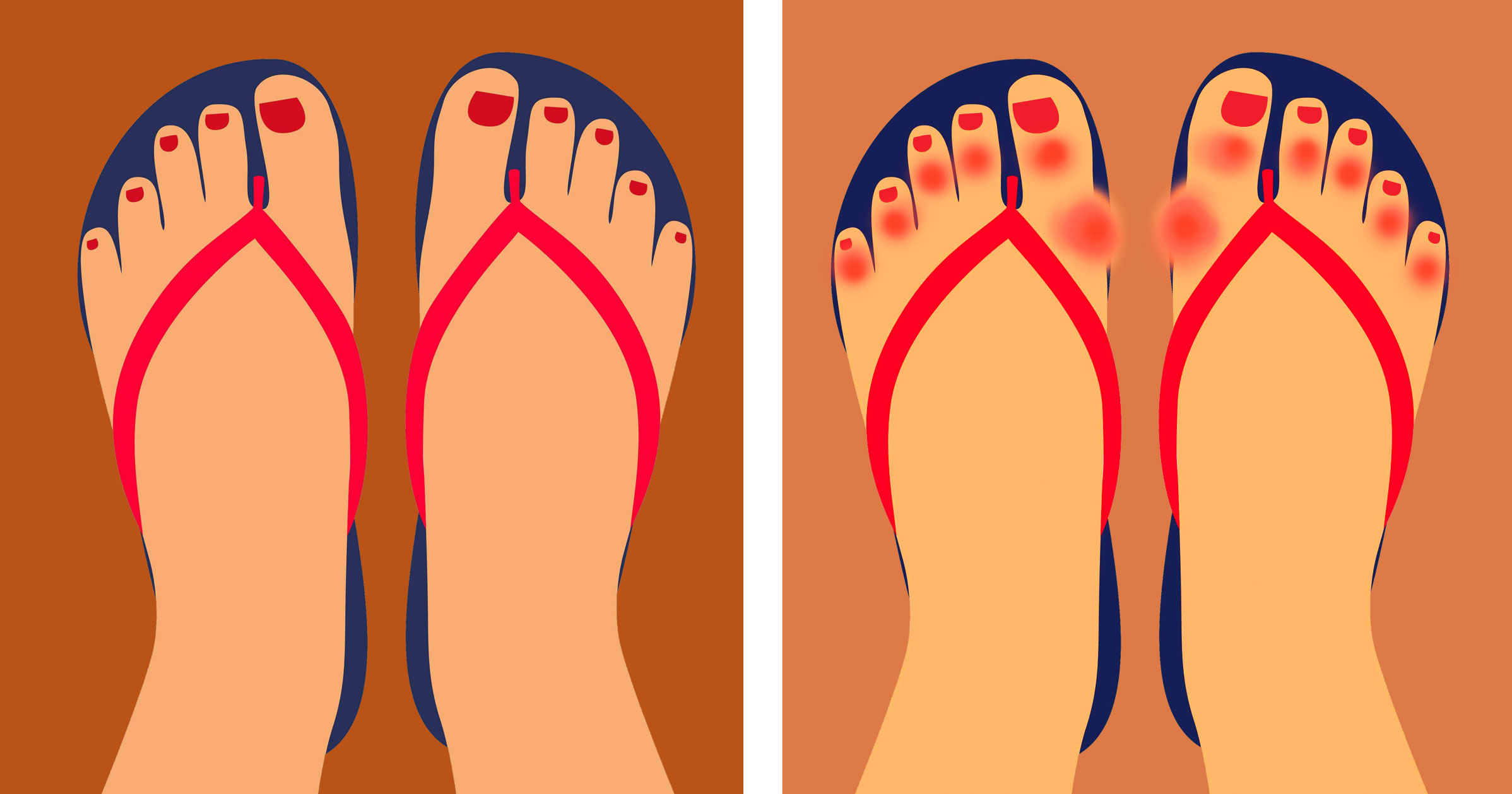Before You Put On Sandals Get Your Feet Ready With This Simple Trick Using Two Items In Your Kitchen
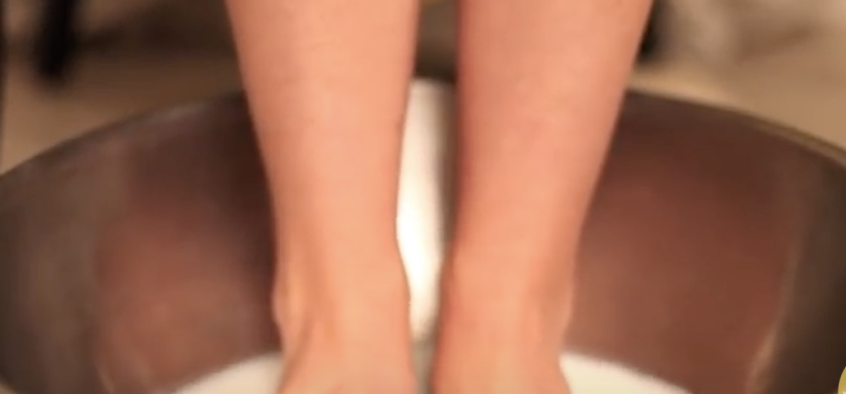
Summertime means sandal season is upon us. Whether it’s open toed shoes, flip flops, or sandals, they all make us stay cool and help our feet breathe in the heat and humidity. It often feels so good and relaxing to finally free our toes from the cramped sneakers and boots that have been covering our feet for months.
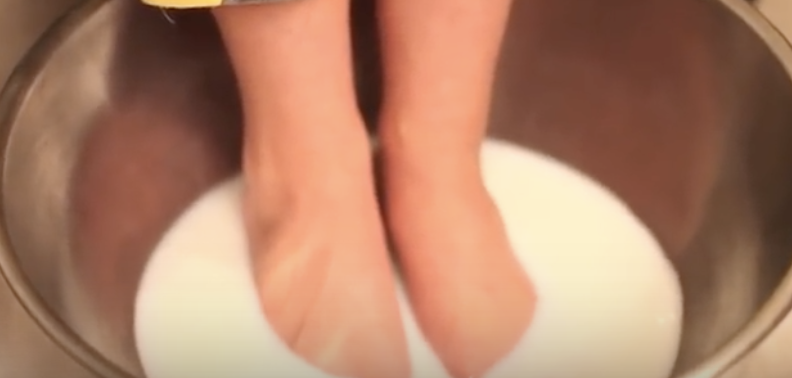
However, lots of us don’t really pay attention to our feet until we have to show them in public. If your feet are not yet sandal ready, or maybe just need a little pampering to get them into tip top condition, then you have to try this nourishing foot soak that will leave your toes looking amazing.
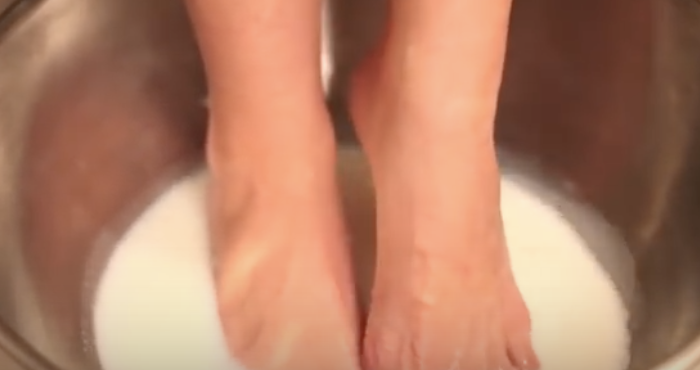
YouTuber Tabitha Blue from Kitchenwise shows us how to make a quick and easy foot soak that uses two simple and all natural ingredients that you likely already have on hand in the kitchen; milk and baking soda. If not, you can pick them up at the store for under $5 total and still have plenty left over for other things or more foot soaks down the line. It only takes about ten minutes total of your time and will leave your feet soft, glowing, and rejuvenated.
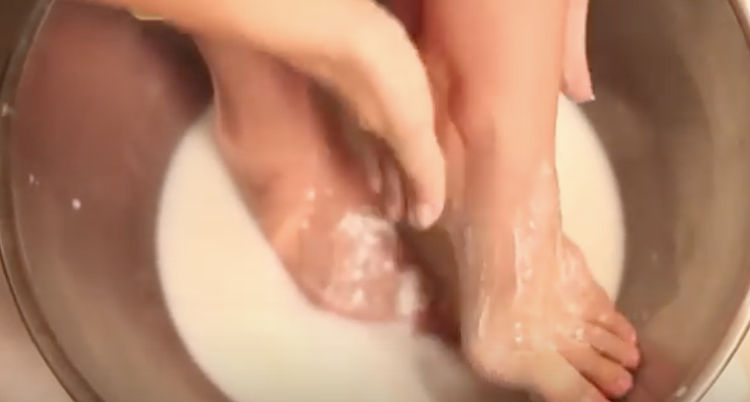
Warm up 2-4 cups of milk and pour it into a bowl or container that’s large enough to fit both your feet in comfortably. Once you have soaked your toes for about five minutes grab the baking soda and lightly sprinkle some over them in your foot bath. Work the baking soda around by gently massaging and scrubbing it onto the feet for about a minute or two.
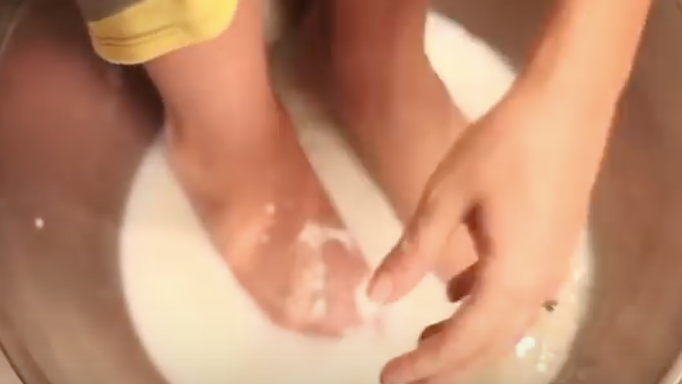
Pay attention to rougher areas or where the skin is thicker, usually heels and the bottoms of feet. Don’t forget to scrub the tops of feet too and around the upper ankle areas that are most visible when you wear sandals. After you’re done scrubbing, keep soaking your feet and sit back and relax for another five minutes.
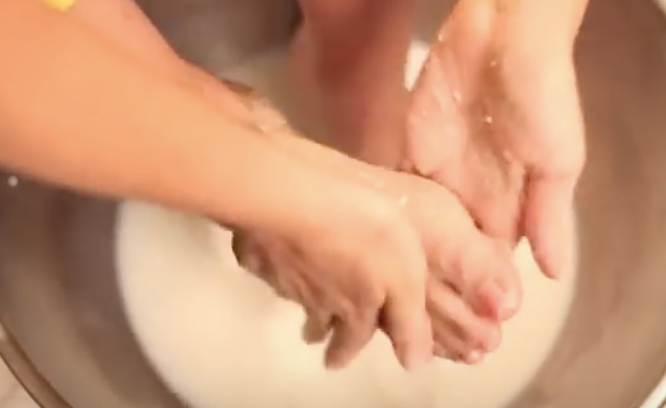
In case you’re wondering how milk and baking soda work to beautify your feet, read on. Milk naturally contains lactic acid within it, which is often used to soften skin. This helps to prepare any rough patches for removal of the dead skin cells on them. Baking soda is naturally abrasive, so by rubbing it on milk softened feet, you can effectively remove rough patches.
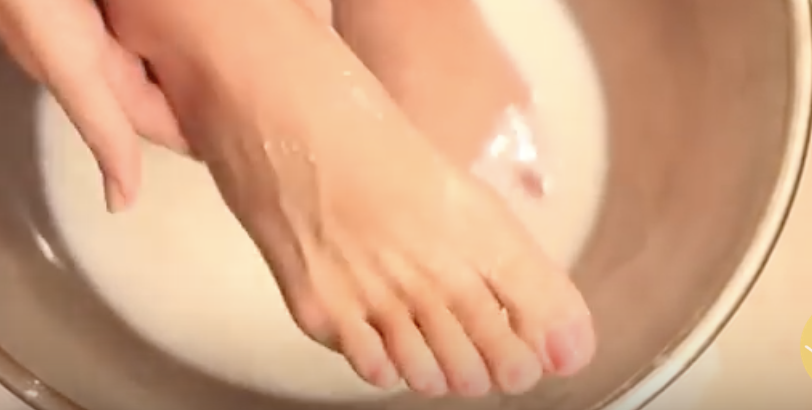
That’s how milk and baking soda work so well together to soften and remove hardened areas of skin, such as tough calluses. If you haven’t tried it yet, give it a shot! Healthy, well cared for, sandal-ready feet will make you feel confident and prepared to take on whatever summer has to offer.
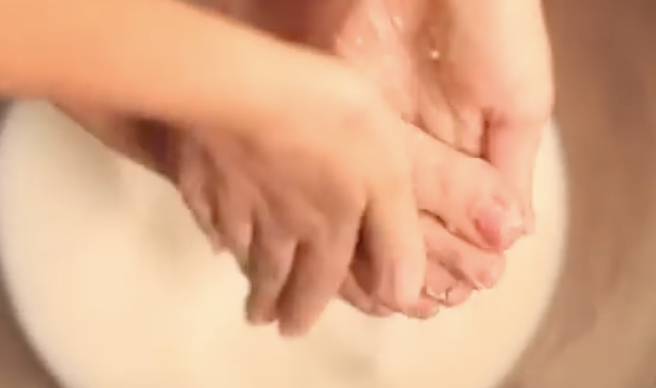
Please Share This Tip With Family and Friends
6 Reasons Doctors Are Now Warning People To Never Wear Flip Flops Again.
Summer is officially in full swing and now that the weather is all hot and humid people everywhere are taking it easy and going into vacation mode. For most of us that means kicking off our shoes and going barefoot, but when we do have to go somewhere we usually just stick our feet in a pair of sandals or flip-flops.
Who doesn’t own at least one pair of flip-flops? Not only are they the most convenient and classic summer footwear option, they also help to keep feet cool and comfortable. However, that’s about all that they’re good for! Flip-flops are actually terrible for our feet and the rest of our bodily health and wellness. Once you read on about why this is so, and just how bad they truly are, you’ll definitely think twice before you spend hours on end in your flippies this summer.
Here’s why podiatrists and doctors agree that the rubber-soled footwear should only be worn poolside, at the beach, or in gym showers:
1) Injuries- Every year flip-flops are responsible for countless foot injuries that range from minor to severe because they offer the feet practically zero support. A lack of arch and heel support, combined with the fact that they make us walk awkwardly to begin with, are what leads to pain and strain on our feet. The most common injuries that people seek treatment for are things like tendinitis, stress fractures, and heel, arch, or muscle pains. Other problems you can expect to experience from wearing them include cuts and scrapes, jammed toes, rolled ankles, infections, sunburn, bunions, blisters, knee pain, hip pain, back pain, hammertoe, pinched nerves, and the list goes on.
2) They Trip You Up- Flip-flops are definitely not the most graceful things to walk around in. They actually cause us to walk really clumsily and it’s super easy to get tripped up by the shoes. Whether someone steps on the back of them while you’re walking or you manage to catch up the front end, they can throw you off balance in a second. Another hazard they present is slipperiness, it’s easy for feet to slide around in them, especially when they get wet or sweaty.
3) Toxic Materials- Those five dollar flip-flops you see being sold at stores are priced so low for a reason; they’re cheaply made! Many of the plastics and materials that go into making them are low quality and can be poisonous or toxic to human health. Many feature plastics that contain BPA which has been linked to cancer and other serious risks. Latex is also widely used, which many people are allergic to, and so it’s best to forgo the cheap plastic versions. Instead, look for ones made with leather, suede, cork, fabrics, and other natural types of materials that don’t pose such a serious threat to your health.
4) Gross Infections- The open, airy style may allow feet to ‘breathe’ but that comes at a price. Flip-flops expose your feet and toes to all sorts of germs, dirt, bacteria, fungus, and other nasty things that can lead to an infection. A number of studies have found that flip-flops pick up and hold a heck of a lot more bacteria than ordinary shoes. This was found to be especially true when people wore them anywhere in public, like at the gym or in restrooms where gross things thrive. Dangerous pathogens such as Staphylococcus and E. coli can easily find their way into any open sore, wound, or cut and wreak havoc on your health. While most people experience mild infections like Athlete’s foot, some have had to have their toes or feet amputated because they picked up a particularly dangerous strain of something.
5) Blisters- Albeit a minor problem in light of the other more serious flip-flop issues, blisters are painful to deal with nonetheless and can lead to further complications. Flip-flops are all but held on to the foot by those two measly little straps that cross over the top of it. This design means that when you walk the straps inevitably rub against your skin. Sometimes this leads to chaffing, irritation, and blisters form which, if and when they pop open, you’re exposed to more bacteria and possible infection.
6) They Slow You Down- The loose fitting shoes change your gait and in effect they slow people down. Findings from an Auburn University study showed that those who wear flip-flops often take smaller sized steps than their sneaker wearing counterparts. Anyone who has ever worn them knows this already because it’s virtually impossible to run for more than ten feet in the darn things!
Watch the video below for more information:
Please SHARE This Information With Family and Friends

